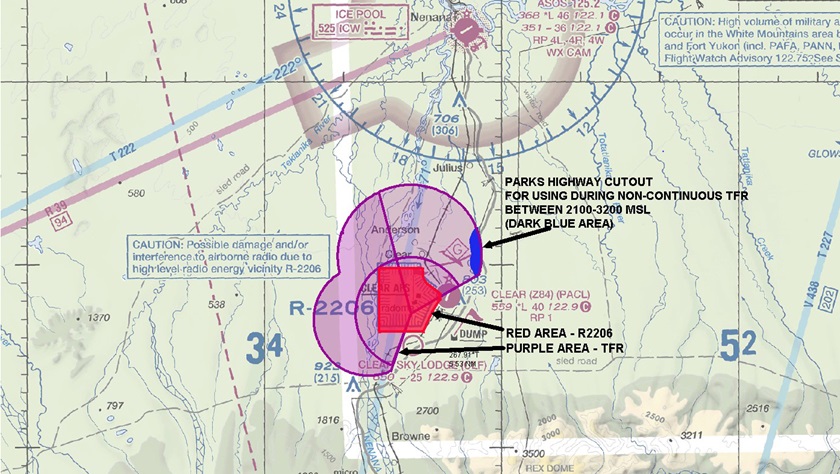TFR to be activated at Alaska's Clear Air Force Station
AOPA urges pilots who are planning flights in the vicinity of Clear Air Force Station in Alaska to check for a temporary flight restriction (TFR) that is expected to become active starting March 31 for testing of the Long Range Discrimination Radar facility.

The TFR is intended to protect aircraft avionics and electrical systems from the effects of high-intensity emissions from the enhanced defense radar system until revisions to restricted area R-2206 are completed and added to navigation charts—expected by November, said Tom George, AOPA Alaska regional manager.
The primary TFR is expected to be active daily from 2359Z to 1600Z. The TFR airspace will include small cut-out areas along the Parks Highway and near Clear Airport to provide limited airport access for pilots and navigation availability for pilots using the highway as a VFR route to and from the Alaska Range.
The other TFR configuration is slightly larger and will be activated only on Tuesdays, Thursdays, and Saturdays from 0800Z to 1000Z for more extensive testing of the LRDR, he said.
AOPA reported in November 2020 on the Missile Defense Agency of the Department of Defense’s plans to initiate a major expansion of Clear’s restricted airspace, and we noted the concerns of aviation groups that the changes “could significantly affect aircraft flying in the vicinity of the LRDR, and those transiting the Windy Pass, a vital route that connects Fairbanks and Anchorage.”
Officials heard general aviation’s voice and responded, George said.
“The agency has acknowledged the importance of this airspace to the aviation community. Working with the FAA, they adjusted the shape of the airspace and timing of their testing to reduce impacts on general aviation,” he added.
Along with revising the proposed restricted area layout, the agency and the FAA are looking into other ways to keep pilots informed about activation of the airspace restrictions, especially those occurring at the last minute, said Jim McClay, AOPA director of airspace, air traffic, and aviation security.
“While AOPA has worked with the Missile Defense Agency to reduce the impacts of this TFR, the airspace remains fairly complex,” he said. “We strongly suggest that pilots take time to familiarize themselves with the details and graphics of the plan—and to check notams frequently before flying in the area.”
Details are provided in a Letter to Airmen issued by the FAA’s Anchorage Air Route Traffic Control Center. Pilots who have questions about the airspace can call the facility at 907-269-1210 or 907-269-2730.


